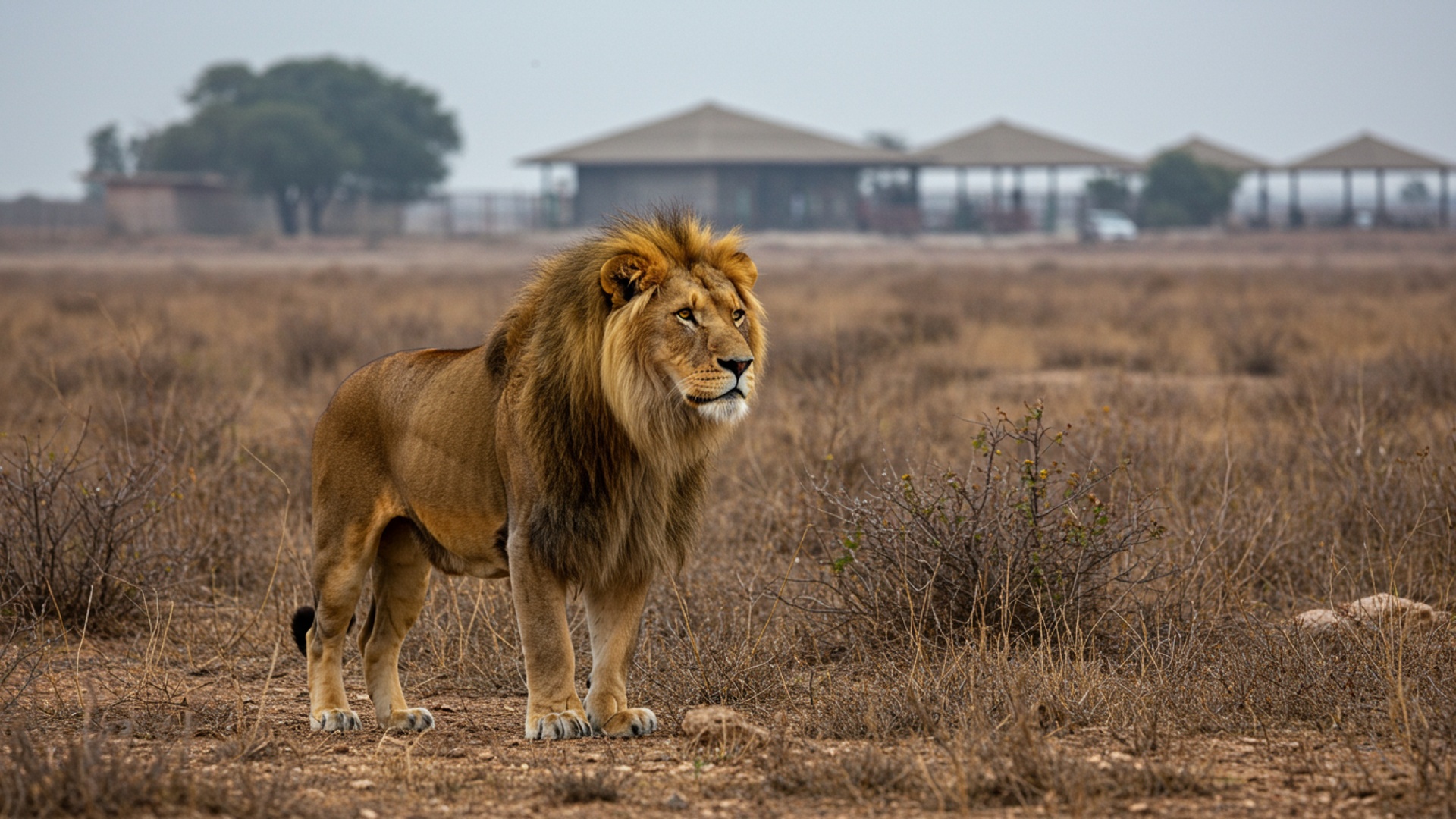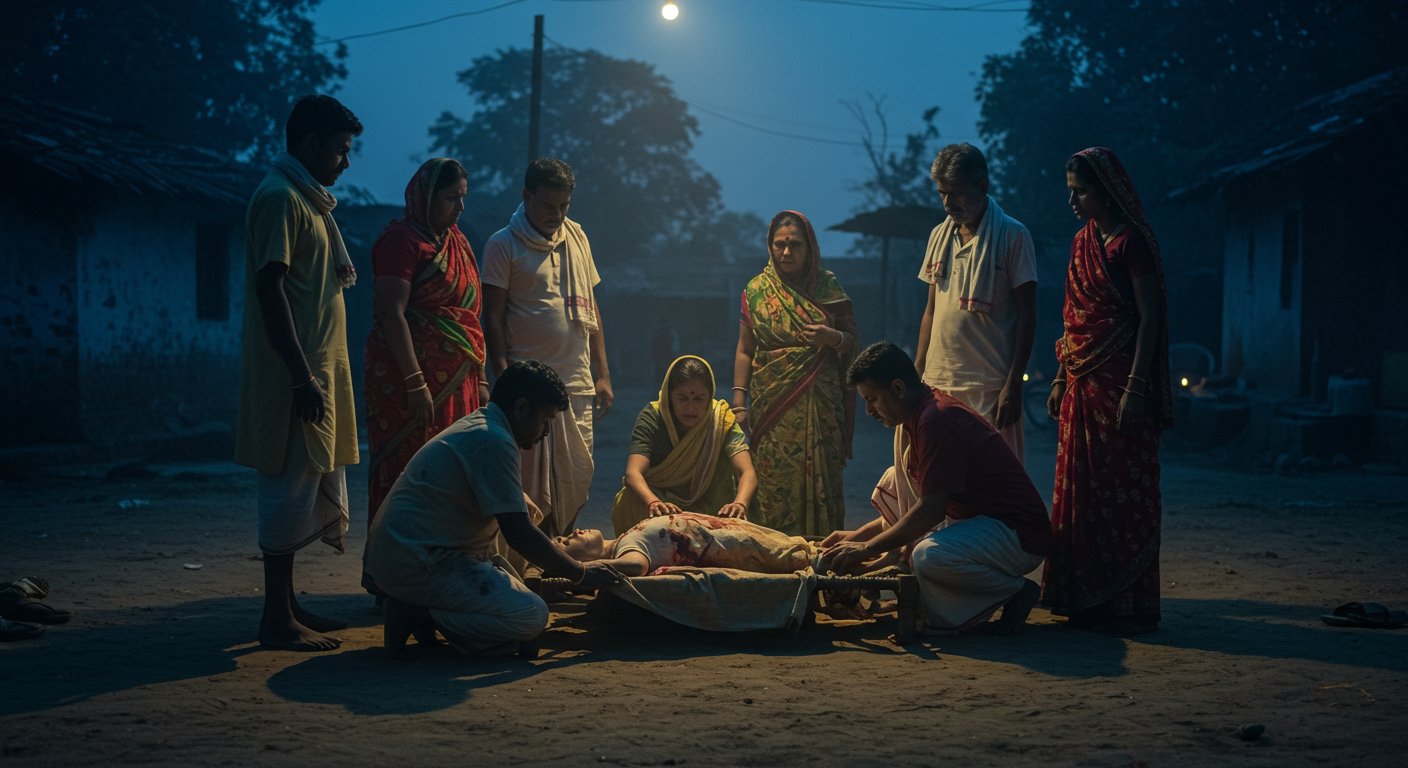A major step forward for Asiatic lion protection takes place as Gujarat establishes the Barda Wildlife Sanctuary as a crucial second home for these big cats. This historic move aims to spread the lion population beyond their current single habitat in Gir Forest, a strategy vital for their long-term survival against diseases and natural troubles. For many years, people who work to save animals have said there is a strong need for another safe area. With this action, Gujarat now actively works to keep these grand animals safe and help them grow for the future.
Why Lions Need More Homes
Gujarat is home to the world’s only wild population of Asiatic lions. The number of these big cats has grown well, from 674 in 2020 to 891 in 2025, showing a rise of 32. 2 percent. Most of these lions live in and around the Gir National Park.
But, having all lions in one place comes with big risks. If a widespread disease were to hit, like the Canine Distemper Virus that caused many lion deaths in 2018, it could wipe out a large part of the population. Also, living in a single area limits their genetic variety, which is not good for their long-term health.
The Gir National Park, while crucial for lion safety, is becoming crowded. This puts stress on the natural resources inside the park. As a result, more than half of the lions now live outside the main Gir forest area, closer to human towns. This closeness can lead to problems, such as lions hunting farm animals. A study in June 2025 showed a 10 percent yearly increase in lion attacks on farm animals. While attacks on people have stayed steady, the situation highlights the need for more safe spaces for lions away from human settlements.
Barda Sanctuary: A New Start
To deal with these challenges, the Barda Wildlife Sanctuary has been chosen as a second home for Asiatic lions. This sanctuary, found in the Porbandar and Devbhumi Dwarka districts, is about 100 kilometers away from the Gir National Park.
Barda was made a sanctuary in 1979. It was once a hunting ground for royal families but has now become an vital area for wildlife. The sanctuary covers about 192. 31 square kilometers. It has a varied landscape with rocky hills, seasonal rivers like Kilganga and Ghodadra. different types of plants and trees. It is also home to many other animals such as leopards, hyenas, jackals, sambar, nilgai. chinkara, which can be food for the lions.
The move to Barda has already seen some success. In 2023, a male lion naturally walked into Barda and made it his home. After this, the Gujarat Forest Department carefully moved five adult lionesses to Barda after checking their health. This planned effort led to new births. The latest count in 2025 showed that Barda now has 17 lions, including 6 grown-up lions and 11 young cubs. This makes Barda the first fully protected satellite lion habitat in the state under Project Lion.
Preparing the New Home
The plan to make Barda a thriving second home for lions is part of a larger government effort called ‘Project Lion’. This project was announced by the Prime Minister in 2020. It is a 10-year project with a big budget to help lions grow in number and ensure their long-term survival.
A sum of INR 180 crore has been set aside for making Barda even better for the lions and for visitors. Efforts are ongoing to improve the lion habitat. This includes removing plants that are not native to the area and helping native grasses grow. Water sources are also being managed better. To make sure lions have enough food, there are plans to increase the number of prey animals like chital and sambar through breeding centers.
For people who want to see the lions in their new home, there are plans to build a safari park covering about 248 hectares. This will help people learn about lion conservation while also enjoying the wildlife.
Working with Local People
The success of conservation efforts depends heavily on the support of local people. In and around Barda, there are communities known as Maldharis, who are cattle herders and have lived in these forest areas for a long time. To create more protected space for lions, there are plans to help these communities move out of the sanctuary voluntarily.
The government plans to offer proper support packages to families who choose to move. This will help create about 1,000 square kilometers of exclusive lion habitat. Also, steps have been taken to reduce conflicts between lions and humans. For example, over 55,000 open wells have had walls built around them to stop animals from falling in by accident.
The growth of tourism around the sanctuary is also expected to help local communities by providing new jobs and chances to earn money. This way, conservation work benefits both the animals and the people living near them.
Expert Views and Future Steps
Union Environment Minister Bhupender Yadav and Gujarat Chief Minister Bhupendra Patel have praised the progress at Barda, calling it a big step for lion conservation. They noted that lions have returned to the Barda region after 143 years, helping to bring back the natural balance of the area.
But, some wildlife experts have raised concerns. They point out that Barda Sanctuary is relatively small, about 192 square kilometers, which might not be enough for a large number of lions. There are also worries that because Barda is only about 100 kilometers from Gir, it might not be far enough to protect the lions from a widespread disease if one were to happen in Gir. Experts like Ravi Chellam have said that a greater distance is needed to truly create a separate, safe population.
For many years, there has been a debate about moving some lions to Kuno National Park in Madhya Pradesh to create a truly separate population. The Supreme Court even ordered this in 2013. But this move has not happened. Kuno is now home to cheetahs brought from Africa. While Gujarat prefers to keep its lions within the state, the success at Barda marks an crucial step in expanding lion habitats inside Gujarat. The ongoing efforts at Barda show a strong commitment to making sure the Asiatic lion population remains safe and grows for the future.
![]()















